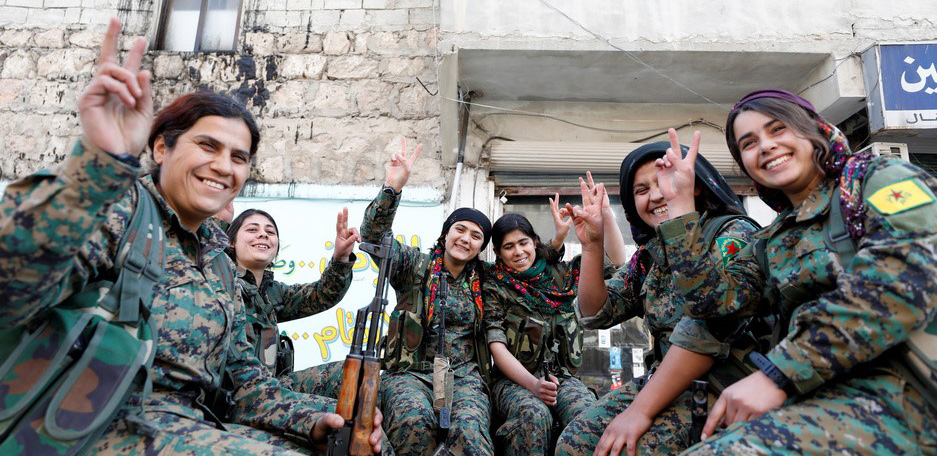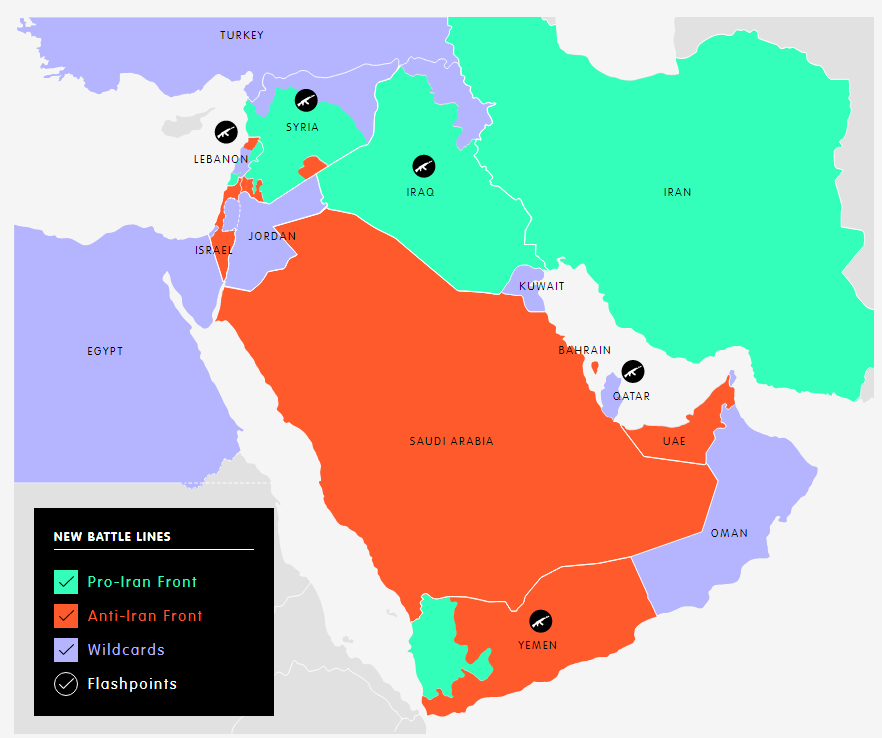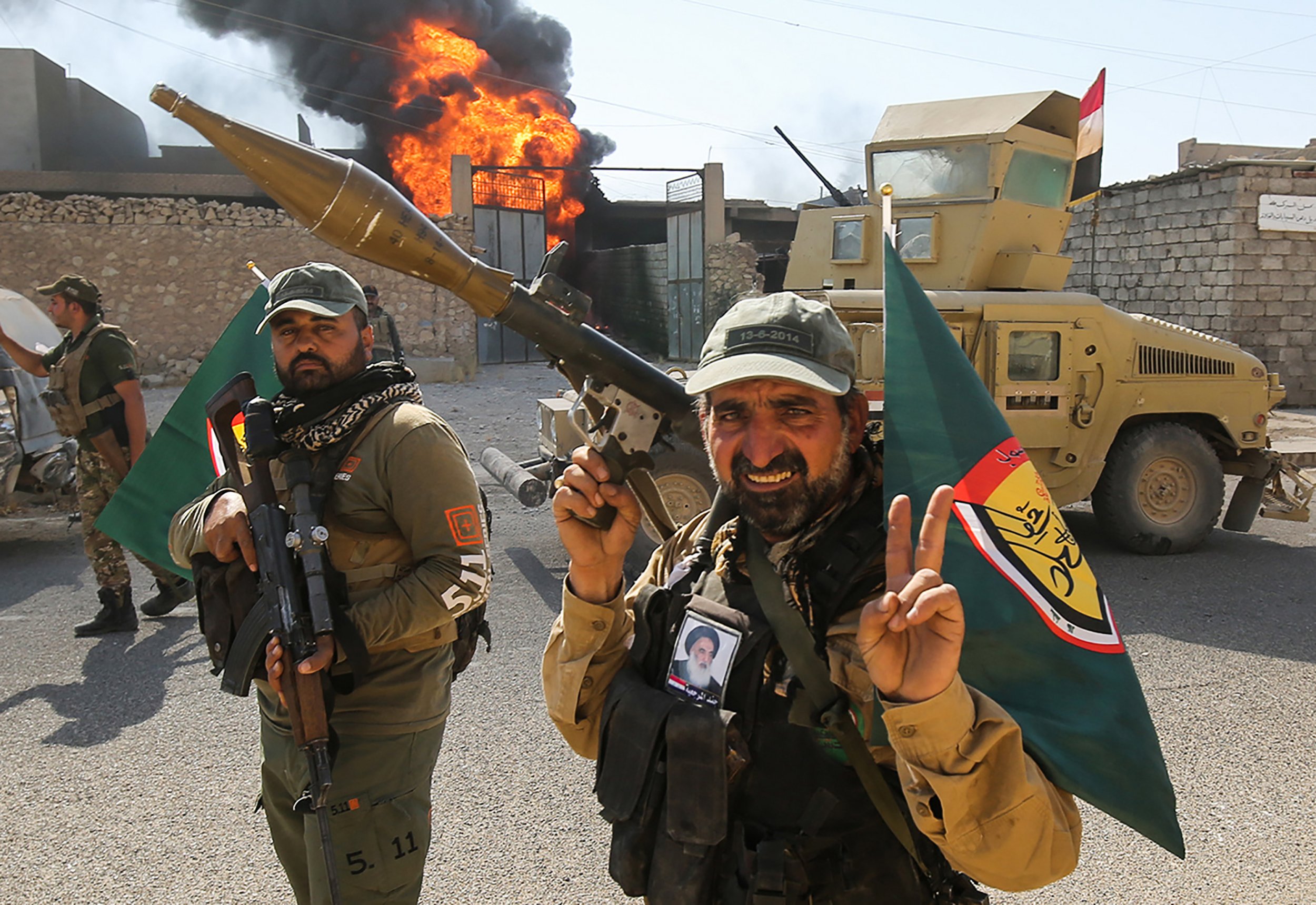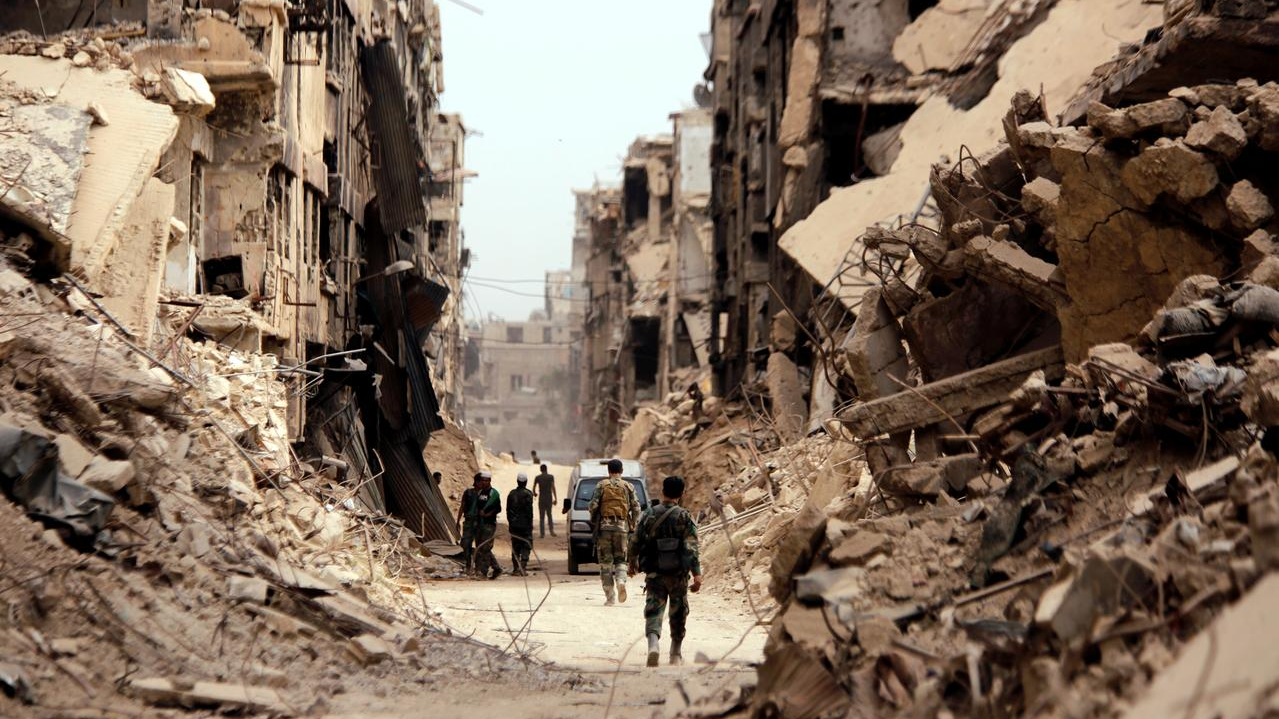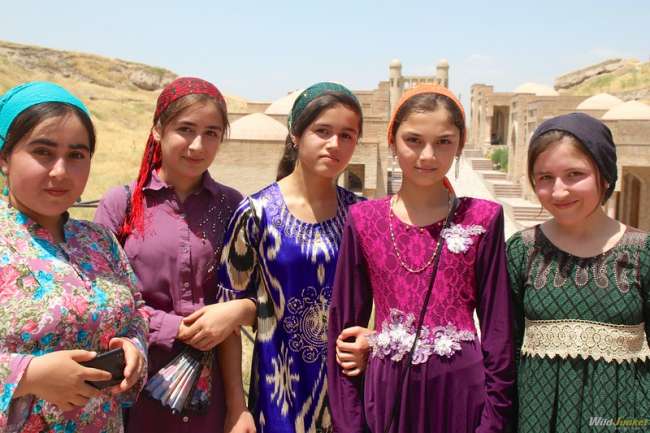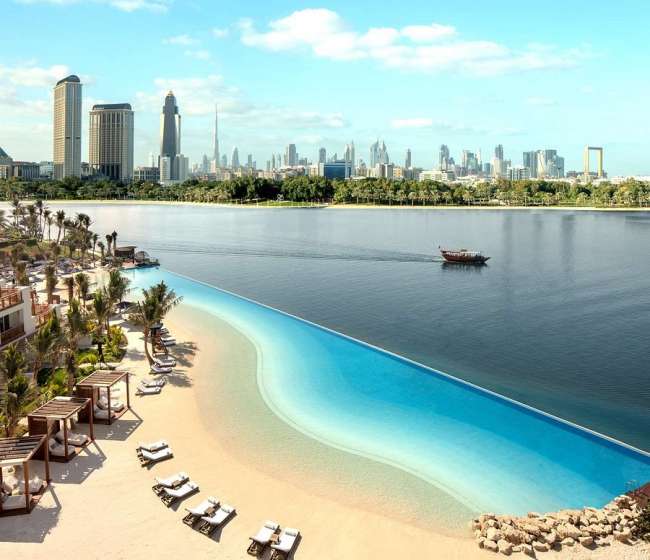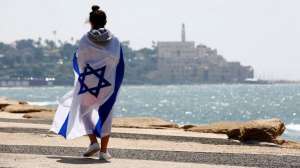Iran’s strategic maneuvers in recent years have deeply reshaped the political and military landscape of the Middle East. Taking advantage of regional chaos, particularly during and after the Syrian Civil War, Tehran has built new alliances and expanded its influence far beyond its borders. This quiet yet relentless expansion has redrawn the region’s battle lines, setting Iran and its allies on a collision course with Western-backed powers — notably the Gulf states and Israel.
While Washington’s approach under successive administrations has oscillated between open hostility and uneasy containment, Europe has remained less assertive. European powers, though divided, still find themselves in a unique position — capable of mediating tensions and potentially preventing a larger regional conflagration. Analysts from the European Council on Foreign Relations have long argued that Europe, given its diplomatic reach and balanced relations, can play a stabilizing role in a region teetering on the edge of escalation.
At the heart of this evolving tension lies the contest between two opposing coalitions. On one side stands Iran, leading a network of state and non-state actors extending across Iraq, Syria, Lebanon, and Yemen. On the other stands a counterfront of Western-aligned powers — Saudi Arabia, the United Arab Emirates, and Israel — supported to varying degrees by the United States and Europe. This geopolitical tug-of-war defines today’s Middle East, shaping conflicts, alliances, and diplomacy across an already fragile landscape.
Changing Regional Power Balance
The rivalry between Riyadh and Tehran has existed for decades, but in the past several years, it has taken on new depth and complexity. Proxy wars have evolved into open confrontation by proxy, and traditional borders between conflicts have blurred. Yemen, Syria, Iraq, and Lebanon — each once defined by local disputes — are now interconnected fronts in a single regional struggle for dominance.
This dynamic, once limited to influence-building, has now metastasized into an increasingly dangerous confrontation. Iran’s growing network of militias and allies has provoked equally aggressive responses from Saudi Arabia, Israel, and the UAE. As these rival blocs push their agendas, the potential for miscalculation — even a small skirmish turning into an interstate war — grows.
When the United States withdrew from the 2015 Iran nuclear deal (JCPOA) during the Trump administration, tensions surged dramatically. Washington’s “maximum pressure” campaign and talk of regime change pushed Iran further toward deepening its partnerships with Russia, China, and regional non-state actors. Nuclear competition, once restrained by diplomacy, reemerged as a regional concern.
The Syrian Battleground: A Mirror of Regional Rivalry
Nowhere are the region’s complexities more evident than in Syria. Once a localized civil war, it has evolved into a microcosm of Middle Eastern power politics. By 2018, Syria became an open theatre where Iranian, Russian, Israeli, American, and Turkish forces operated simultaneously — each pursuing separate, overlapping objectives.
A particularly revealing incident occurred when an Iranian drone launched from Syrian territory entered Israeli airspace. Israel retaliated with a large-scale strike, and Syrian anti-aircraft missiles downed an Israeli jet. In response, Israel intensified its targeting of Iranian facilities and personnel in Syria, escalating fears of a broader confrontation. The message was clear: the Middle East’s wars can no longer be neatly separated. Every front touches another.
Syria now serves as both a warning and a symbol. It demonstrates how interconnected and combustible regional rivalries have become. A single spark in Damascus, Aleppo, or Daraa can ripple outward to Beirut, Riyadh, or Tel Aviv — even to Washington and Moscow.
Understanding Iran’s Expanding Influence
Iran’s expanding power is one of the most striking features of the modern Middle East. Through decades of patient strategy, Tehran has cultivated a dense web of allies and proxies. From Lebanon’s Hezbollah and Iraq’s Popular Mobilization Forces to Yemen’s Houthis and numerous militias in Syria, Iran’s reach is extensive.
This network was not built overnight. It emerged from Tehran’s conviction that its survival depends on projecting influence beyond its borders. The memory of isolation during the Iran-Iraq War (1980–1988) and decades of sanctions convinced Iranian leaders that deterrence and forward defense are vital. By creating and supporting ideological allies, Iran established a shield of influence that now stretches from the Persian Gulf to the Mediterranean.
In Lebanon, Hezbollah remains Iran’s most effective partner — both politically and militarily. It commands significant power within the Lebanese state and operates as a deterrent force against Israel. In Syria, Iran’s involvement ensured Bashar al-Assad’s survival, largely through its Revolutionary Guards (IRGC) and foreign Shia militias recruited from Iraq and Afghanistan.
Yemen presented another opportunity. As the Saudi-led coalition intervened against Houthi rebels in 2015, Iran supplied the group with technical assistance, weapons, and ballistic missile knowledge. Though Tehran denies direct involvement, the pattern of support is clear: Iran uses asymmetric strategies to stretch its rivals thin, forcing them into prolonged, costly conflicts.
Drivers Behind Iran’s Regional Strategy
Iran’s actions are guided by two central motives: deterrence and regional recognition.
First, Iran seeks to prevent foreign powers — particularly the U.S., Israel, and Saudi Arabia — from undermining or toppling its regime. Its military capabilities, though limited compared to those of its adversaries, are reinforced through unconventional means: proxy forces, missile programs, and cyber capabilities. This asymmetric approach ensures that any attack on Iran would provoke consequences across multiple fronts.
Second, Tehran insists on being recognized as a legitimate regional power. It rejects any order that marginalizes its influence. From Iran’s perspective, the region’s security architecture — historically shaped by Western powers and their Gulf partners — has unfairly excluded it. Through military, political, and economic alliances, Iran aims to reshape that order on its own terms.
Interestingly, Iran’s strategy blends pragmatism with ideology. Despite its revolutionary rhetoric, Tehran has maintained functional ties with countries like Turkey and Qatar — even when they supported opposing factions in the Syrian conflict. Similarly, its partnership with Russia in Syria reflects a mutual understanding: both seek to reduce Western influence in the region, even if their long-term goals differ.
The Internal Cost of Regional Ambition
While Iran’s external influence has expanded, its domestic costs are mounting. The Iranian economy continues to struggle under sanctions, inflation, and currency devaluation. Public frustration has grown, particularly during the 2019 and 2022 waves of protests, where citizens criticized the government’s foreign spending at the expense of domestic welfare.
Many Iranians question why their government allocates billions to foreign militias while living standards at home continue to fall. Nonetheless, the Islamic Revolutionary Guard Corps (IRGC) views these foreign operations as vital to Iran’s survival — a doctrine unlikely to change soon.
At the same time, internal debates within Iran have emerged regarding Syria’s future, Hezbollah’s role, and the country’s missile program. While the leadership maintains a united front, generational divides within the political elite suggest that Iran’s future course might not remain static.
Iran’s Opponents: The Counter-Coalition
Opposing Iran is a coalition built around Saudi Arabia, the United Arab Emirates, and Israel — with strong backing from the United States. These states share one objective: to curb Tehran’s growing footprint.
Saudi Arabia sees Iran’s support for Shia movements across the Arab world — from Bahrain to Lebanon — as a direct threat to its sovereignty. Israel views Iran’s missile program and Hezbollah’s armament as existential dangers. The UAE, though more commercially focused, aligns with Riyadh’s and Tel Aviv’s fear of Iranian expansionism.
Under U.S. encouragement, this coalition has intensified intelligence sharing and military coordination. What began as informal exchanges has grown into a quiet yet substantial alignment — a new regional architecture defined less by shared culture and more by mutual opposition to Iran.
The Pushback Strategy: Confronting Iran
The counter-coalition’s approach to Iran has been shaped by both fear and frustration. For Saudi Arabia and the UAE, Iran’s involvement in Yemen and its perceived support for dissident groups inside their borders represent not just regional rivalry but a direct challenge to domestic stability. For Israel, Iran’s encirclement strategy — establishing military footholds in Lebanon, Syria, and even parts of Iraq — is seen as an existential threat.
To these states, diplomacy has proven futile. They believe that Iran interprets negotiation as weakness and that only sustained pressure, or even limited confrontation, can deter its ambitions. This belief has grown stronger under U.S. leadership that favors a hardline stance. Washington’s “maximum pressure” policy and its steady support for Israel’s preemptive actions have emboldened this regional bloc to push more aggressively against Tehran’s network.
In recent years, shared concerns about Iran have also quietly fostered normalization between Arab states and Israel. Economic dialogues, intelligence cooperation, and mutual defense arrangements are all increasing — mostly away from public view. The logic is clear: while historical and ideological divisions remain, Tehran’s growing reach has created a common threat strong enough to bridge them.
Washington’s Influence and Shifting Commitments
The United States remains the most influential external actor in this regional contest, though its role has evolved. Under the Trump administration, anti-Iran rhetoric became central to U.S. Middle East policy. Trump’s withdrawal from the nuclear deal, along with sanctions targeting Iranian oil exports, sought to cripple Iran economically and politically.
For Washington, countering Iran served several goals: reassuring Gulf partners, strengthening Israel’s position, and reasserting U.S. dominance after years of perceived retrenchment. However, while the rhetoric was aggressive, America’s military footprint in the region gradually decreased. The U.S. sought to outsource much of the confrontation to local allies — encouraging them to take the lead in managing regional conflicts while America provided intelligence, weapons, and political cover.
This partial withdrawal left mixed results. It empowered local powers to act independently but also created instability as regional actors filled the vacuum, each pursuing their own version of deterrence. Meanwhile, the European powers attempted to maintain diplomatic balance — supporting the nuclear deal and urging restraint — yet lacked the unified influence to enforce de-escalation.
The Challenges of an Anti-Iran Alliance
Despite their shared goals, the anti-Iran bloc is far from cohesive. Deep divisions persist — between Israel and the Arab states, and even among the Gulf countries themselves. While Saudi Arabia and the UAE lead the alliance, their objectives and methods are not always aligned.
In Yemen, for instance, Saudi forces and Emirati-backed militias have often pursued conflicting interests, weakening their overall campaign. Egypt, though financially supported by Riyadh and Abu Dhabi, has refused to fully commit troops to the anti-Iran cause. President Abdel Fattah el-Sisi views Tehran as a counterweight to radical Islamist movements — not a direct enemy.
The Qatar crisis further complicated matters. Riyadh and Abu Dhabi’s decision to blockade Qatar over its ties to Iran and Turkey fractured the Gulf Cooperation Council. In response, Qatar deepened its diplomatic and economic partnership with Tehran, effectively undermining efforts to isolate Iran. Turkey, too, sided with Qatar, signaling its discomfort with Saudi regional dominance.
These divisions reveal a critical flaw: while Iran’s allies often operate under a unified strategic vision, its rivals remain fragmented by conflicting priorities and internal politics. Tehran benefits from this lack of cohesion, skillfully exploiting divisions to strengthen its hand.
New Fault Lines and Shifting Alliances
The confrontation between Iran and its adversaries has gradually reshaped the map of Middle Eastern diplomacy. Unofficial normalization between Israel and Gulf states has created a web of pragmatic cooperation that would have been unthinkable a decade ago. Yet even this progress remains constrained by the unresolved Palestinian question.
Saudi Arabia, for example, must balance its quiet coordination with Israel against its role as the self-proclaimed guardian of the Muslim world. Public opinion in Arab societies remains overwhelmingly sympathetic to the Palestinian cause, forcing Riyadh and Abu Dhabi to tread carefully. Until Israel makes significant concessions on that front — which seems unlikely — full normalization remains elusive.
Operationally, Saudi Arabia faces additional constraints. Its military capabilities are substantial on paper but weakened by overreliance on foreign contractors and inconsistent training. Ongoing involvement in Yemen has drained resources and public support. As a result, Riyadh’s confrontations with Iran often take indirect forms: cyber operations, media campaigns, or covert funding of rival militias.
Israel, by contrast, continues to act unilaterally. Its intelligence services conduct targeted strikes against Iranian assets in Syria and beyond, rarely coordinating openly with Arab partners. These asymmetrical approaches mean that, while the anti-Iran front appears strong in theory, it lacks unified command and strategy.
The Rising Threat of Escalation
In the background of these rivalries, the Middle East remains one of the most volatile regions on Earth. Neither side — Iran or the anti-Iran coalition — openly seeks a full-scale war, yet their ongoing brinkmanship makes such a conflict increasingly plausible.
From Yemen’s missile launches to Israel’s air raids in Syria, every new military incident carries the potential to spiral into a wider confrontation. Iranian leaders have repeatedly warned that any major attack on their interests will provoke direct retaliation, while Saudi and Israeli officials insist they will not tolerate continued provocations.
A Saudi official was once quoted as saying that the next thirty years could define the struggle for the Middle East — a struggle that may be “devastating but necessary.” The sentiment reflects a dangerous acceptance of prolonged instability as the price of dominance.
In Syria and Lebanon, the proximity of Iranian-backed militias to Israeli forces continues to generate flashpoints. A single misjudgment, such as a drone incursion or an errant missile, could ignite a rapid chain reaction involving multiple states and possibly global powers like Russia and the United States.
The European Perspective and Its Limitations
Europe finds itself caught between moral obligation and strategic caution. France, Germany, and the United Kingdom all share concerns about Iran’s regional ambitions, its missile programs, and its involvement in Syria and Yemen. Yet they also understand that direct confrontation has consistently failed to yield results.
For European policymakers, the collapse of the nuclear deal represented a significant diplomatic setback. It removed one of the few mechanisms capable of moderating Iran’s behavior through engagement. Since then, European governments have sought to preserve limited dialogue with Tehran while urging restraint on all sides.
However, Europe’s leverage remains limited. While it maintains extensive trade and defense ties with Gulf states and Israel, it lacks the unified military presence necessary to enforce stability. Instead, European influence relies on diplomacy — encouraging multilateral talks, supporting humanitarian aid, and maintaining backchannels between regional rivals.
For Europe, the challenge lies in balancing principle with pragmatism: confronting Iran’s destabilizing actions while avoiding policies that would plunge the region into deeper chaos. The prevailing lesson, drawn from Syria and Yemen, is clear — external military intervention tends to strengthen Tehran’s hand rather than weaken it.
Europe’s Role in Preventing a Wider Conflict
If Europe is to play a meaningful role, it must act as a mediator rather than a participant. The continent’s proximity to the region makes it particularly vulnerable to spillover effects — from refugee crises to energy disruptions and terrorism. Stability in the Middle East directly influences European security and economics.
European leaders could leverage their dialogue channels with Tehran, Riyadh, and Tel Aviv to encourage regional security frameworks built on coexistence rather than competition. The goal should not be to eliminate Iran’s influence — an impossible task — but to channel it into predictable, negotiable boundaries.
A sustainable balance of power requires acknowledgment from all sides that neither bloc can achieve absolute dominance. The alternative — a perpetual cycle of proxy wars and retaliations — will continue to devastate regional societies while threatening global energy and security interests.
The 2026 Landscape: New Shifts in an Old Rivalry
As 2026 unfolds, the Middle East’s political horizon remains clouded with uncertainty, yet new diplomatic undercurrents are beginning to reshape the region’s long-standing divides. While tensions persist between Iran and its adversaries, subtle but significant developments hint at a possible recalibration of power and intent.
Renewed Iran–Saudi Engagement
In late 2025, Tehran and Riyadh signed an agreement concerning the administration of the 2026 Hajj pilgrimage. Though largely procedural, this accord represents more than a religious arrangement — it signals cautious diplomatic re-engagement after decades of hostility. The two nations continue to navigate their rivalry carefully, maintaining lines of communication that were previously severed.
Diplomatic Maneuvering and Nuclear Dialogue
Iran’s leadership has once again voiced interest in reviving discussions over its nuclear program, emphasizing peaceful intentions while asserting its sovereignty. At the same time, the U.S. has tightened sanctions on Iranian individuals and companies linked to missile development and drone warfare. This duality — diplomacy alongside coercion — has become emblematic of the region’s current phase: neither war nor peace, but constant negotiation through pressure.
Shadow Cooperation Between Israel and Arab States
Intelligence leaks have revealed growing covert cooperation between Israel and several Arab governments, facilitated by U.S. Central Command. These partnerships, while politically delicate, underscore how shared threats can override public hostility. Joint training sessions and strategic coordination have quietly expanded, particularly in cyber defense and drone technology.
Persistent Instability and Proxy Conflicts
Despite flashes of diplomacy, the region remains on edge. Yemen continues to serve as a proving ground for rival coalitions. Iraq, still fragile, struggles with balancing its ties between Tehran and Washington. In Syria, Iranian and Israeli forces operate in dangerously close proximity, maintaining a tense equilibrium that could unravel at any moment.
Europe’s Renewed Mediation Efforts
Recognizing the fragility of the situation, European powers have resumed quiet diplomacy aimed at restoring parts of the nuclear framework. France and Germany, in particular, have advocated for incremental agreements tied to regional de-escalation measures — such as restrictions on missile proliferation and limits on proxy deployments.
The Emerging Trend: Pragmatism Over Ideology
A notable feature of the 2026 Middle East is the slow but steady rise of pragmatic politics. While ideology still fuels rhetoric, the realities of economic strain, population pressure, and shifting global attention are pushing regional players to explore coexistence. From Qatar’s dialogue with Iran to the UAE’s cautious economic cooperation with Israel, small gestures hint at a broader transformation in progress.
Looking Ahead
The Middle East of 2026 stands at a precarious intersection. The traditional “battle lines” that once divided the region into clear camps are blurring. Old enemies are opening limited communication, and long-standing alliances are being quietly redefined. Yet the potential for explosive confrontation remains — every advancement toward peace exists beside an undercurrent of suspicion and unresolved conflict.
For policymakers and observers alike, the region’s future depends on recognizing this delicate balance: the Middle East is no longer defined solely by open warfare but by the persistent tension between conflict and compromise, ideology and pragmatism. Whether these new openings mature into genuine peace or dissolve under renewed rivalry will shape the next chapter of the region’s complex and volatile history.


